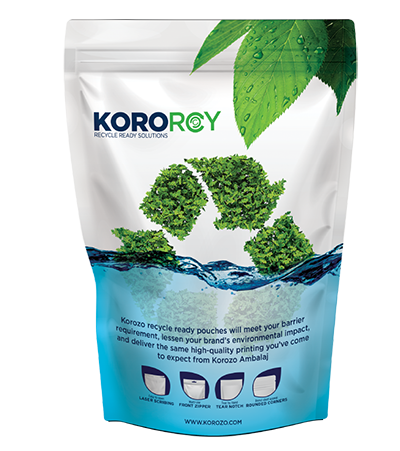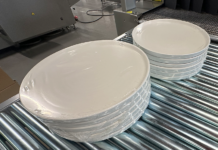Thomas Stevenson, UK & Ireland business development manager at Korozo Group, says the packaging sustainability ‘revolution’ remains far from over
AS the global packaging industry faces increasing pressure to improve sustainability, the drive towards ‘recycle-ready’ solutions has gained significant traction. We’re on the road to a circular economy, propelled by a perfect storm of consumer demand, legislative changes and industry innovation.
The engine at the heart of the circularity revolution is the switch from multi-material to mono-material packaging constructions.
Traditional multi-layer and mixed material packaging, while effective in preserving product integrity and reducing food waste, poses a challenge for recycling. The complexity and cost of separating different materials has often rendered these packages unrecyclable at scale, cementing their place in a linear waste stream and contributing to the global waste crisis. Mono-material alternatives offer a clear path to improved recyclability.
Clean and tidy
By utilising a single material throughout the packaging structure, these solutions simplify the recycling process, leading to cleaner recycling streams and higher-quality recycled materials, while negating the need for heavy waste infrastructure investment. This shift aligns perfectly with the circular economy principles that are increasingly shaping the direction of the industry.
The EU’s Packaging and Packaging Waste Regulation (PPWR) aims to make all packaging reusable or recyclable by 2030. This is likely to become a blueprint for similar legislation worldwide, making the development of recycle-ready packaging solutions a global imperative.
Perhaps the greatest challenge in this transition lies in maintaining – and improving – packaging performance while enhancing recyclability. The point of mixed-material packaging was that each layer played a different role, whether that’s moisture or oxygen barriers, food contact layers, or printed outer surfaces.
Single-material substrates are being developed that can do it all. We’re seeing a surge in innovation around mono-material films, such as barrier technologies and compatible additives that can deliver the performance of multi-layer constructions without compromising recyclability.
Ubiquitous success
The technology behind mono-material packaging is impressive, but its success may not hinge on consumer awareness of the technical details. Rather, it’s true potential lies in simplifying the kerbside recycling process. The average consumer doesn’t necessarily need to understand the intricacies of a ‘mono-material’ construction; they simply need to know that the packaging can be easily recycled. Easier recycling is not just about convenience; it’s about maximising the potential of our recycling systems. By making more packaging recyclable and recycled, we increase the volume of materials that are recaptured and reprocessed, further closing the loop in our circular economy efforts.
This shift in focus from technical specifications to practical recyclability is key to widespread adoption and market growth. As we continue to innovate, we must also address the challenges of incorporating post-consumer recycled (PCR) content. PCR reduces reliance on virgin materials and helps close the circular loop, although raises technical challenges in maintaining consistent quality, colour and mechanical properties. We must invest in technologies and processes that can deliver high-quality PCR materials, especially for food-grade applications.
Waste streams also need to keep pace with demand for PCR content. Recent issues related to supply and demand, such as when the UK Plastic Packaging Tax came into effect, highlight the need for more efficient collection and processing systems. We can’t create packaging with material that doesn’t exist, so improving recycling infrastructures must complement packaging innovations.
The shift to recycle-ready packaging represents both a challenge and an opportunity for our industry. By embracing innovation, anticipating regulatory changes, and keeping sustainability at the forefront of designs, we can play a pivotal role in creating a more circular and sustainable future for packaging.
As packaging professionals, we have the expertise and the responsibility to lead this change. The mono-material revolution is not just about meeting regulations or satisfying consumer demand – it’s about fundamentally reimagining how we design, produce and recycle packaging. Our success will be measured not by how well we market the technical aspects of mono-materials, but by how seamlessly these innovations integrate into consumers’ recycling habits.
More to come
The potential of recycle-ready packaging will only be fully realised when recycling is ubiquitous. Products such as the recycle-ready KoroRCY and Koroform-RCY solutions are already seeing strong success in the market, with more brands switching onto their potential to deliver sustainable and circular packaging.
The growing use of such materials is one element of the circularity equation, albeit an important one. By maintaining our momentum and focusing on making recycling easier for consumers, we can drive the transition to a truly circular economy in packaging.
The revolution has begun but our work is far from over. Let’s keep pushing forward to deliver sustainability, pack-by-pack.














